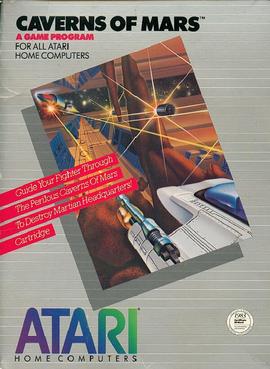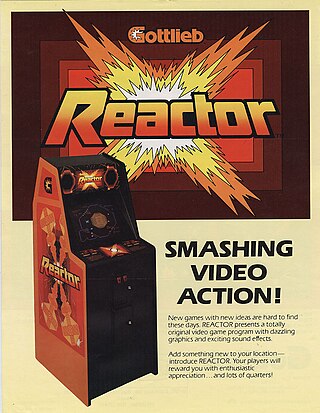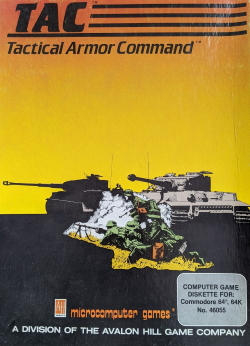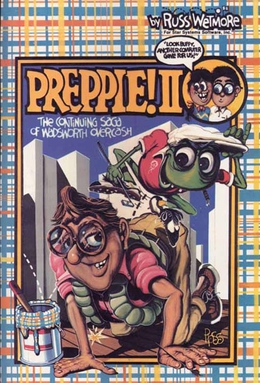
A boiling water reactor (BWR) is a type of light water nuclear reactor used for the generation of electrical power. It is the second most common type of electricity-generating nuclear reactor after the pressurized water reactor (PWR), which is also a type of light water nuclear reactor.

Star Raiders is a space combat simulator video game created by Doug Neubauer and published in 1980 by Atari, Inc. Originally released for the Atari 400/800 computers, Star Raiders was later ported to the Atari 2600, Atari 5200, and Atari ST. The player assumes the role of a starship fighter pilot, who must protect starbases from invading forces called Zylons. Piloting and combat are shown in the 3D cockpit view, while a 2D galactic map shows the state of the Zylon invasion. Neubauer made the game during in his spare time at Atari, inspired by contemporary media such as Battlestar Galactica and Star Wars, as well as the 1971 mainframe game Star Trek.

M.U.L.E. is a multiplayer video game written for Atari 8-bit computers by Ozark Softscape. Designer Danielle Bunten Berry takes advantage of the four joystick ports of the Atari 400 and 800 to allow four-player simultaneous play. Published in 1983, M.U.L.E. was one of the first five games from new company Electronic Arts, alongside Axis Assassin, Archon: The Light and the Dark, Worms?, and Hard Hat Mack. It is primarily a turn-based strategy game, but incorporates real-time elements where players compete directly as well as aspects that simulate economics.

A scram or SCRAM is an emergency shutdown of a nuclear reactor effected by immediately terminating the fission reaction. It is also the name that is given to the manually operated kill switch that initiates the shutdown. In commercial reactor operations, this type of shutdown is often referred to as a "scram" at boiling water reactors (BWR), a "reactor trip" at pressurized water reactors and EPIS at a CANDU reactor. In many cases, a scram is part of the routine shutdown procedure, which serves to test the emergency shutdown system.
Passive nuclear safety is a design approach for safety features, implemented in a nuclear reactor, that does not require any active intervention on the part of the operator or electrical/electronic feedback in order to bring the reactor to a safe shutdown state, in the event of a particular type of emergency. Such design features tend to rely on the engineering of components such that their predicted behaviour would slow down, rather than accelerate the deterioration of the reactor state; they typically take advantage of natural forces or phenomena such as gravity, buoyancy, pressure differences, conduction or natural heat convection to accomplish safety functions without requiring an active power source. Many older common reactor designs use passive safety systems to a limited extent, rather, relying on active safety systems such as diesel-powered motors. Some newer reactor designs feature more passive systems; the motivation being that they are highly reliable and reduce the cost associated with the installation and maintenance of systems that would otherwise require multiple trains of equipment and redundant safety class power supplies in order to achieve the same level of reliability. However, weak driving forces that power many passive safety features can pose significant challenges to effectiveness of a passive system, particularly in the short term following an accident.
Gossip is a video game created for Atari 8-bit computers by then-Atari, Inc. employee Chris Crawford. The documentation indicates that Gossip is an Atari Program Exchange title, but it was not listed in any of the published catalogs and may not have been released at all.

Eastern Front (1941) is a computer wargame for Atari 8-bit computers created by Chris Crawford and published through the Atari Program Exchange (APX) in 1981. A scenario editor and assembly language source code for the game were also sold by APX as separate products.

Caverns of Mars is a vertically scrolling shooter for Atari 8-bit computers. It was written by Greg Christensen, with some features later added by Richard Watts, and published by the Atari Program Exchange (APX) in 1981. Caverns of Mars became the best selling APX software of all-time and was moved into Atari, Inc.'s official product line, first on diskette, then on cartridge.

Reactor is an arcade video game released in 1982 by Gottlieb. The object of the game is to cool down the core of a nuclear reactor without being pushed into its walls by swarms of subatomic particles. Reactor was developed by Tim Skelly, who previously designed and programmed a series of vector graphics arcade games for Cinematronics, including Rip Off. It was the first arcade game to credit the developer on the title screen. Reactor was ported to the Atari 2600 by Charlie Heath and published by Parker Brothers the same year as the original.

The BN-600 reactor is a sodium-cooled fast breeder reactor, built at the Beloyarsk Nuclear Power Station, in Zarechny, Sverdlovsk Oblast, Russia. It has a 600 MWe gross capacity and a 560 MWe net capacity, provided to the Middle Urals power grid. It has been in operation since 1980 and represents an improvement to the preceding BN-350 reactor. In 2014, its larger sister reactor, the BN-800 reactor, began operation.

Blue Max is a scrolling shooter written by Bob Polin for Atari 8-bit computers and published by Synapse Software in 1983. It was released for the Commodore 64 the same year. U.S. Gold published the Commodore 64 version in the UK in 1984 and ported the game to the ZX Spectrum. In 1987, Atari Corporation published Blue Max as a cartridge styled for the then-new Atari XEGS.

Astro Chase is a multidirectional shooter written by Fernando Herrera for Atari 8-bit computers. It was published by First Star Software in 1982 as the company's first game. Parker Brothers licensed it, releasing cartridge versions for the Atari 8-bit family and Atari 5200 console in 1983 and a Commodore 64 version in 1984. Exidy licensed it for arcade use with its Max-A-Flex cabinet.

Legionnaire is a computer wargame for Atari 8-bit computers created by Chris Crawford released through Avalon Hill in 1982. Recreating Julius Caesar's campaigns in a semi-historical setting, the player takes command of the Roman legions in real-time battles against the barbarians.
Boiling water reactor safety systems are nuclear safety systems constructed within boiling water reactors in order to prevent or mitigate environmental and health hazards in the event of accident or natural disaster.

Wayout is a 3D first-person perspective video game programmed by Paul Allen Edelstein and published for the Atari 8-bit computers in 1982. It was released for the Apple II and Commodore 64 in 1983. Wayout is among the first maze games to offer full 360 degree 3D perspective and movement, and its graphics were considered state-of-the-art upon its release. There were many pseudo-3D maze games at the time, but they used a fixed perspective and limited the player to four orientations.

Boulders and Bombs is a video game for Atari 8-bit computers published on cartridge by CBS Software in 1983. It was written by Keith Dreyer and Torre Meeder who previously developed the Berzerk-clone K-Razy Shoot-Out. In Boulders and Bombs, the player must dig tunnels so three people can cross from one side of the screen to the other. Bird-like creatures, flying in the upper portion of the screen, launch projectiles into the dirt to thwart the player. While there isn't a separate multiplayer mode, joysticks plugged into each of the remaining 1-3 ports can each control one of the birds. The game generally received poor reviews, with reviewers citing control issues and the lack of excitement.

T.A.C. is a top-down tactical combat videogame published by Avalon Hill in 1983 for Apple II, Atari 8-bit, Commodore 64 and IBM PC. The game takes place during the Second World War and simulates clashes involving the United States, the USSR, Germany and the United Kingdom.

Preppie! II is a video game written by Russ Wetmore for Atari 8-bit computers and published by Adventure International in 1983. Subtitled "The continuing saga of Wadsworth Overcash", it is a sequel to 1982's Frogger-inspired Preppie!. The game loosely continues the preppy theme, primarily through a story in the manual, but replaces the country club setting with an abstract, overhead view maze. Some obstacles from the first game appear in the second.

Mr. Cool is an action game designed by Peter Oliphant and published in 1983 by Sierra On-Line for the Atari 8-bit and Commodore 64 home computers. The ports for the IBM PC and Apple II were written by John Redekopp and released the same year. The game is heavily inspired by the 1982 arcade video game Q*bert.

Hellcat Ace is a 1982 combat flight simulator video game written by Sid Meier for Atari 8-bit computers and published by MicroProse as their first program. The game was an immediate hit and led Meier to write several new releases for the Atari home computers. Ports of Hellcat Ace were released for the Commodore 64 in 1983 and IBM PC compatibles in 1984.

















